The Lever Action Octagon Frontier .22
Thoughts From A Competitive Shooter
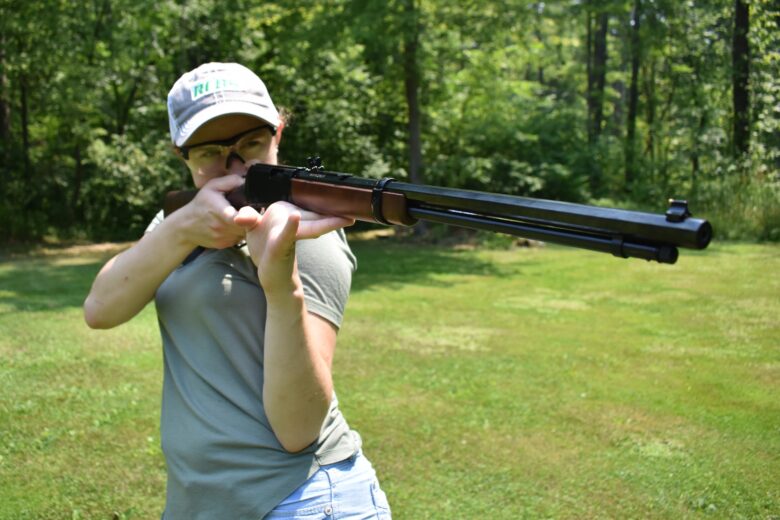
Photo Credit: Max Crotser
There’s just something about a lever action. The first ones I ever saw are woven into the memories of my first shooting experiences.
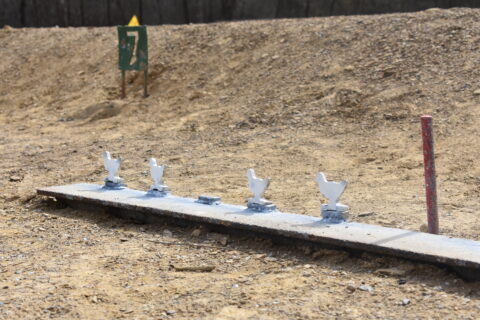
Regulation smallbore chicken silhouettes at Ridgway Rifle Club. These targets are smaller than those in smallbore lever action silhouette, but at the same distance — 40 meters. Photo Credit: Serena Juchnowski
I started shooting at age 14, competing in a version of silhouette we called cast bullet “buffalo shoots” at Tusco Rifle Club in New Philadelphia, Ohio. They consisted of shots from the standing position and prone position off sticks at steel targets in the shapes of chickens, pigs, turkeys, and rams. The target sizes were all wrong for the guns we were shooting. (The pistol silhouette targets exceeded the sizes of the rifle silhouette targets for the same distances.) Also, offhand only made up 25% of the shooting. In traditional silhouette, with the exception of black powder cartridge, 100% of firing is from the standing position. Even though this version was easier than the real thing, it was still incredibly challenging.
I grew up around hunting. Guns were a piece of that. I understood firearm safety and shot BB guns a few times at camp. I eventually had my own, but never really used it. The sense of “ownership” was there and I was protective of “my” gun. My Crosman was marked by a different color sticker than my sister’s, but I wasn’t physically strong enough to make the third pump to make the BB fly. I quickly grew tired of the inability and lost interest.
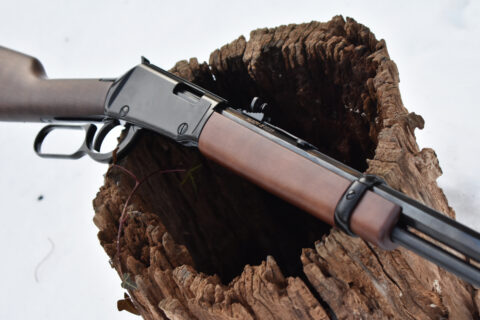
The Henry Lever Action Octagon Frontier .22. Photo Credit: Serena Juchnowski
When I was finally introduced to a .22 LR rifle at age 14, I wondered why no one had ever shown one to me before. I started attending once-a-month summer buffalo shoots, shooting a .22 T/C contender single-shot break open action with a 3-9 power scope I kept at the highest magnification. I learned the importance of triangles for building a stable shooting position and tips for mental management. For some time, I competed in only the scoped .22 LR class. There was a separate class for iron sights. I didn’t have much interest at the time, just having discovered that a .22 is far superior to a BB gun.
Everyone at the range out-aged me by 50 to 60 years with the exception of one girl. She was about my age and the only other female on the range. She came with her grandfather and always shot a beautiful .22 lever action with a funny little squirrel engraved in silver on its side. I was comfortable and happy with my contender, but soon tired of driving an hour to shoot just 20 minutes.
Each matchday consisted of various relays. Each relay lasted approximately 20 minutes. You could compete in multiple classes ranging from .22 to pistol caliber to big bore. I would come along with my dad, shoot one 20-minute relay, and be done for the day. My dad shot several classes so I spent the rest of the day spotting for him and visiting with Chuck Malone, the man who brought us there in the first place and who taught me how to shoot a.22.
Looking back now, it’s funny how many memories I have of seeing lever action .22’s, but no memory of shooting them. I recall my dad picking up his Marlin and bracing against the side of his body, wavering back and forth ever so slightly while shooting offhand. I remember his praise of the lever-action design and magazine capacity. Only recently did I really understand for myself.
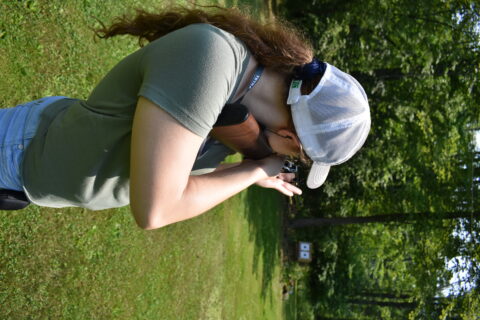
Offhand is my favorite shooting position, but also the most challenging. The rifle was easy and comfortable to hold in position. Photo Credit: Max Crotser
While I realized at age 14 that a .22 LR rifle was a fantastic way to introduce young people to shooting sports, it took nearly another decade for me to realize how excellent a platform a lever-action is for the same. Not only are they lightweight and go along with those cap gun revolvers I had growing up, but they are also fun. What really piqued my interest was combining everything aforementioned with accuracy.
Tasked with choosing a rimfire Henry to experiment with, I landed on the Henry Lever Action Octagon Frontier .22. Octagon barrels were something my dad always raved about, and I came to like the design myself. It’s different than everything else I’ve ever fired or owned. It also fits my top criteria: being legal for cowboy silhouette competition. After approximately eight years of shooting, I finally shot my very first true smallbore silhouette match. I’ve been competing in high power for over six years and in long range for about two but never made the full circle to my rifle beginnings until last year.
Henry’s Octagon Frontier is ideal for the sport. A long barrel with a classic design backed by sturdy craftsmanship right here in America. (Shooting a lever-action not made in the USA almost seems wrong.) This was my very first Henry and I didn’t know what to expect. Now I’m a huge fan, recommending it to anyone who will listen. I took the .22 out in the backyard just to get a feel for it. Nothing could compare to the feeling of working the lever between shots, challenging myself to do so efficiently, smoothly, and swiftly without degradation of form. Marksmanship isn’t magic, but it does require practice and attention to detail. Shooting offhand at roughly 20 yards, the rifle punched a ragged hole. I wasn’t even trying; I just wanted to shoot. I was so excited I didn’t even zero it off a bench first. (Trust me, I know 20 yards is nothing for a rifle. It can do much more.)
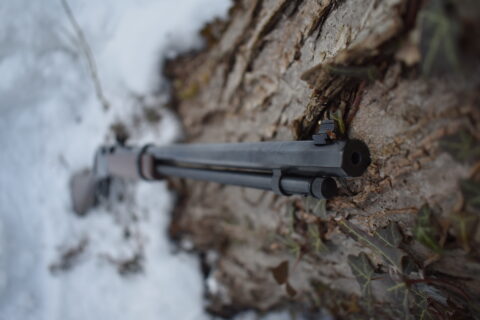
The Octagon barrel is this gun’s defining feature. Photo Credit: Serena Juchnowski
Shh- shh – bang. Shh-shh—Bang. The lever made a soft swish as I yanked it back and forth, perhaps too enthusiastically. With a 17-round magazine capacity, I thought the rifle would never run out of ammunition. I began daydreaming while I was shooting, imagining this must be what reaching inside Santa’s sack of toys feels like, a never-ending black hole of fulfilled Christmas wishes.
I am a person who values accuracy and quality. I expect my gun to hit where I’m aiming and need to know my equipment can outshoot me. I have no doubts the Henry Octagon Frontier .22, now one of my favorite guns to plink with can do just that. I’ll be running more formal tests to prove it.
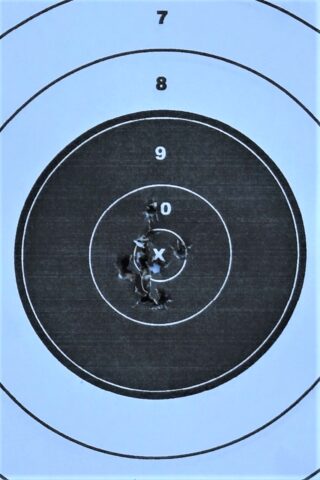
I know 20 yards is nothing for a rifle, but I was impressed for walking out and shooting the gun for the first time with no zero. Photo Credit: Serena Juchnowski
Serena Juchnowski is an outdoor writer, competitive shooter, and Distinguished Rifleman from Ohio. You can contact her at serenashoots.com. Follow Serena on Instagram and Facebook.
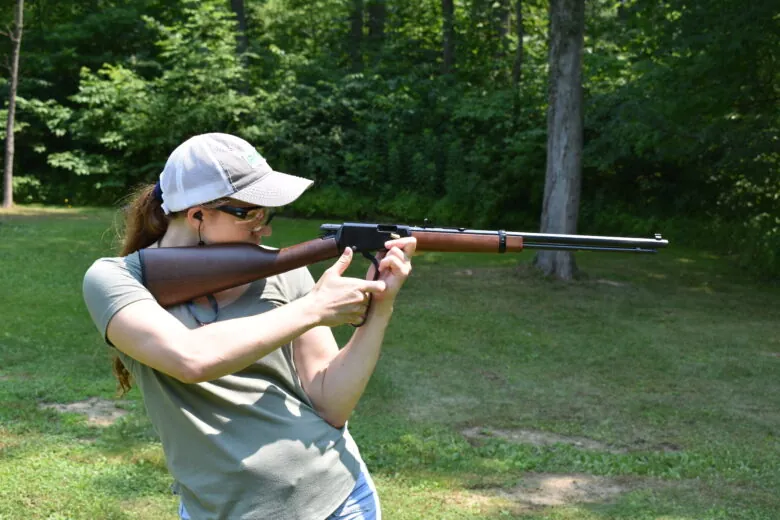
Working the lever is intoxicating. Photo Credit: Max Crotser

